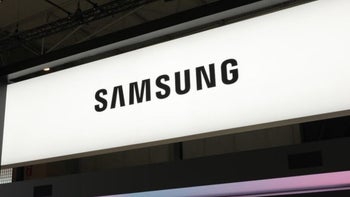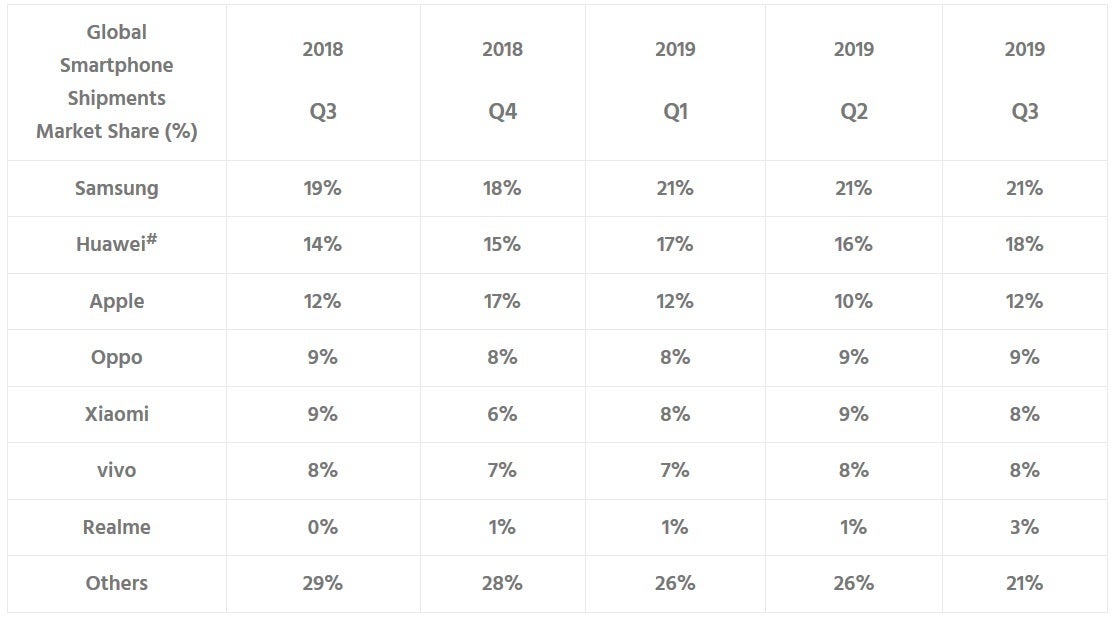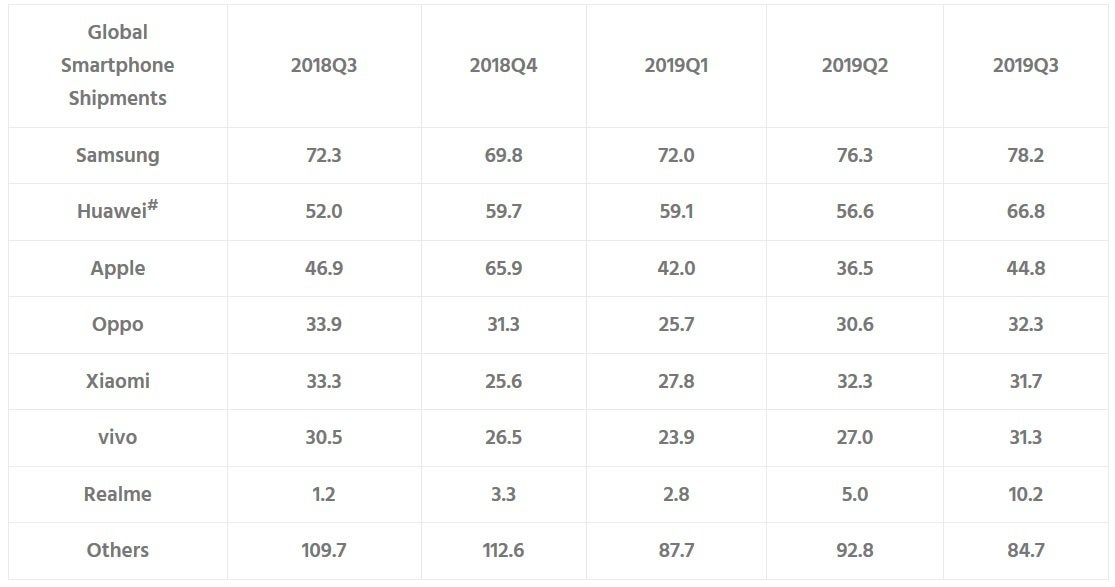Samsung, Huawei and Apple remained the top three smartphone manufacturers last quarter

Samsung remained on top of the smartphone world during the third quarter as data from Counterpoint Research reveals. For the period from July through September, Samsung delivered 78.2 million units up 2.5% from the 76.3 million handsets it shipped during the second quarter of 2019. On a year-over-year basis, the growth came to 8.4%; the manufacturer shipped 72.3 million phones during the same quarter last year. Samsung's market share remains at 21% as it has throughout the year. During the same quarter last year, Sammy had a 19% slice of the pie. The manufacturer had success with its mid-range Galaxy A series that focuses on photography and long battery life.
Huawei, despite being handicapped by being banned from its U.S. supply chain, still managed to deliver 66.8 million phones during the three-month period. That was a hefty 28.5% year-over-year gain and 18% higher than the number of handsets it shipped during the second quarter this year. Huawei owns 18% of the global smartphone market, up four percentage points from last year. The manufacturer's international business might have been impacted by the U.S. supply chain ban because it prevents Huawei's latest models from downloading Google's core Android apps like Maps, Search, the Play Store and more. The Huawei Mate 30 line and the foldable Mate X both have an open-source version of Android pre-installed. However, a wave of patriotism in China helped the company increase its shipments of phones in the country by an amazing 66% on an annual basis during the third quarter; in China, Huawei's Q3 market share was 42.4%.
Little known Realme had the strongest growth among the top seven smartphone manufacturers during the quarter
In third place during the quarter was Apple; the latter shipped 44.8 million iPhones, down 4.5% from the 46.9 million handsets that were shipped during the same quarter last year. Because Apple starts shipping its latest models during the calendar third-quarter, there is no reason to compare Q2 numbers with those for Q3. We can point out though that the iPhone's 12% share is the same as the share it had during the third quarter of 2018.

Samsung, Huawei, and Apple were the top three global smartphone manufacturers during Q3
Oppo and Xiaomi were the fourth and fifth largest smartphone manufacturers during the quarter, respectively. The former delivered 32.3 million units from July through September, compared to the 33.9 million shipped during the same quarter last year. On a sequential basis, Oppo's shipments rose by 1.7 million phones. The company's worldwide market share has fluctuated between 8% and 9% over the last few quarters and is now at 9% (same as last year). As the quarter was coming to an end, the manufacturer released the sequel to the Reno, which features the "Wedge." The motorized pop-up selfie camera allows the Reno 2 to sport a screen-to-body-ratio of nearly 88%.
Xiaomi, with an 8% slice of the global smartphone pie, is known for its value for money approach in developing markets like India. The company shipped 31.7 million phones from July through September, down 4.8% from the 33.3 million it delivered during the same time period in 2018. It also was a slight decline from the 32.3 million shipped during the previous quarter. Another Chinese manufacturer accounted for 8% of the global smartphone market during the quarter, Vivo. That figure was flat with the firm's market share during the third quarter last year, and the second quarter of this year. Vivo showed growth both on an annual and sequential basis with gains of 2.6% and 16% respectively. Overall, Vivo shipped 31.3 million handsets in the quarter.

Huawei showed outstanding growth during the period despite being banned from accessing its U.S. supply chain
Lastly, Chinese manufacturer Realme had some strong growth during the quarter although it was starting from a small base. The company shipped 10.2 million phones during the three months, up more than seven-fold from the 1.2 million it delivered during last year's third quarter. It was also more than double the 5 million it shipped during the second quarter of this year. Realme has tripled its tiny market share from 1% of the global market during Q2 to 3% at the end of Q3.
Overall, 84.7 million handsets were shipped during the third quarter. That is a huge 25 million or 22.8% decline year-over-year. On a sequential basis, the decline comes out to 8.7% But there is potentially good news coming. With carriers widening their 5G coverage, more consumers are expected to transition to 5G next year and they will need to purchase 5G compatible phones. Ericsson predicts that by 2025, there will be 2.6 billion 5G mobile subscriptions worldwide.









Things that are NOT allowed: